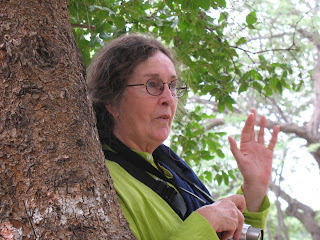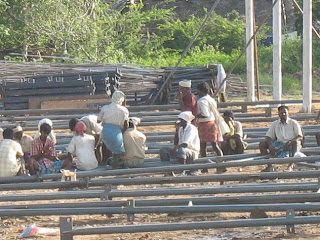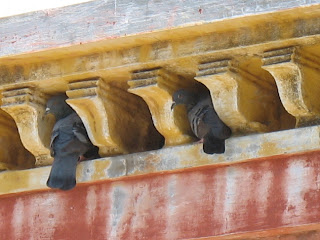The Arunachala Kattu Siva Plantation (AKSP) refers to a group of local persons engaged on restoration of forest on the western end of Arunachala in the area stretching from below the peak above Kattu Siva Thirthum on the inner path route to the end of the hill slopes at the feet of Siva.
The indelibly stated aims of its work are as follows:
1. To regenerate our artesian basins by reforesting Arunachala hillock in co-operation with natural processes, preserving diversity in genetic, soil and water sources;
2. To gradually re-structure the contours of the hill from Kattu Siva to Vediyappan on all sides in order to maximize water conservation;
3. To take responsibility for plantation, maintenance and protection of forest growth in a sustainable manner;
4. To nurture seedlings for plantation in our own nursery for a wide variety of species particularly indigenous;
5. To extend our knowledge of all aspects of ecological management within our organically functioning group;
6. To include supervisors of our working group in discussions about planning and management and enable workers to extend their experience and expertise in training, encouraging their work towards stable empowerment and self determination.
We are over-ripe for some of our group to go away for further training. This requires additional funds: funding which I invite you to consider since the further education of Green Workers creates ripples of influence far into the community, perhaps more pervasive and more truly beneficial than any other form of contribution.

We have also been offered an acre of land adjacent to our area on the other side of the hill for developing a nursery (see above photo). This is a great boon to us. We will need to raise funds for the fencing of the land and the sinking of a bore down the well since the water table has diminished so much in recent years. These are the most urgent foundational needs.
There is a photo for you to see the aspect of the hill from this land. We shall begin rock work on this side of the hill during the coming dry months of summer so we would like to establish a vermiculture system as soon as possible so that we can improve the soil up on these degraded slopes.
Now we have seasonal workers digging pits up on the slopes, adding vermiculture to improve the eroded soil up there and the women have the arduous task of carrying water to drought threatened trees. We are somewhat impatiently waiting for the second rains so that we can plant but a heavy nocturnal cloud hangs over our whole area making nights much cooler than is normal while the days are March to April days, which doesn't augur well for rain. However Deepam is coming up soon and it almost always rains then.

Apeetha Arunagiri
The Deed of the Trust will be registered by November 5th. Once we have our Registration Number we can open a new bank account. Until that time, to remit donations please contact apeetha@hotkey.net.au to learn how funds can be sent by cheque or money order, or by electronic transfer. Please visit us at our website to find out more about the Arunachala Kattu Siva Plantation. With Thanks. Apeetha Arunagiri.















































